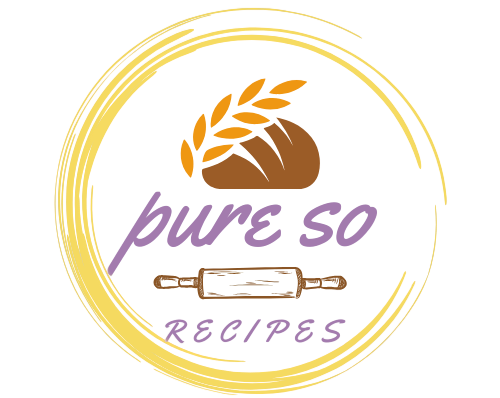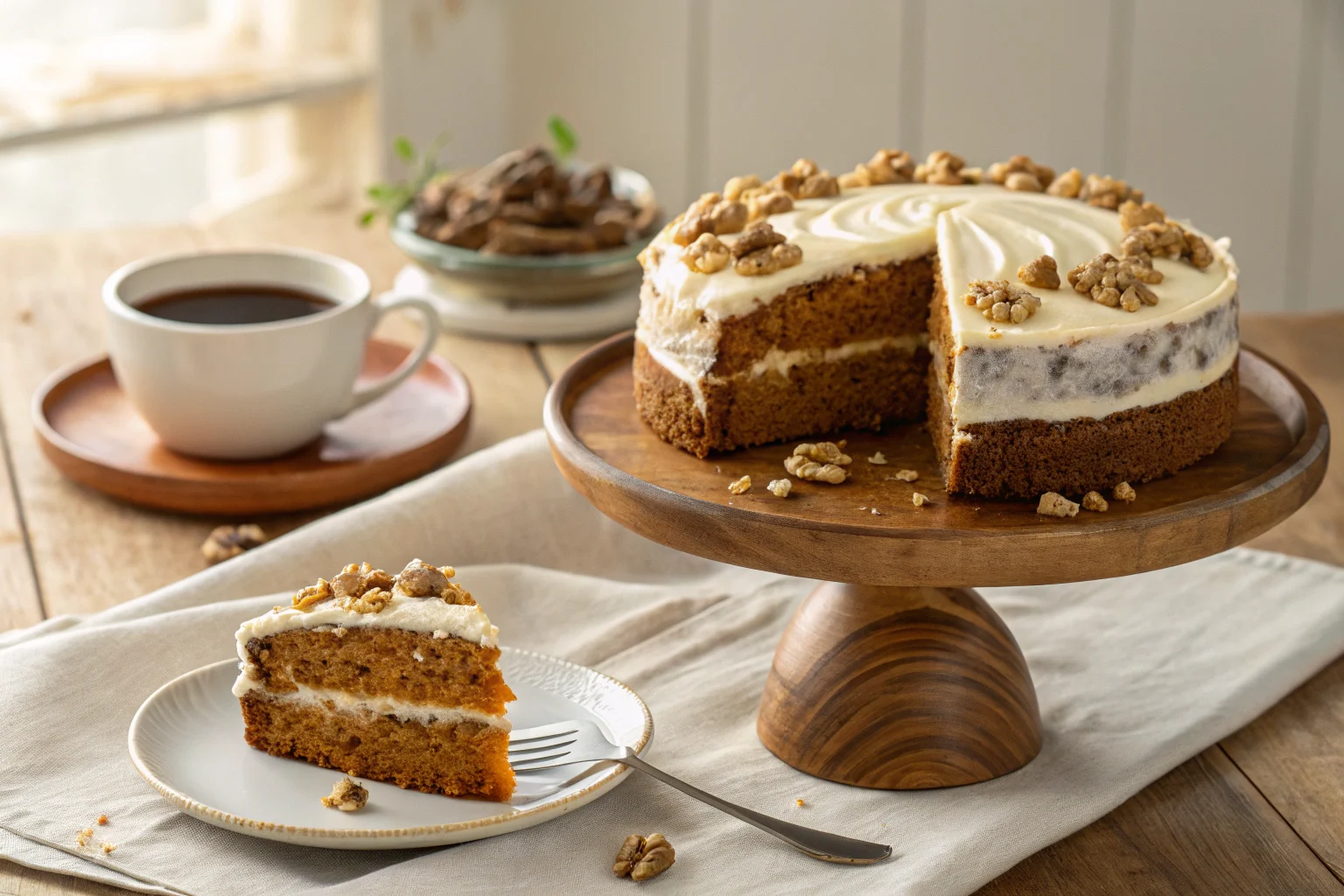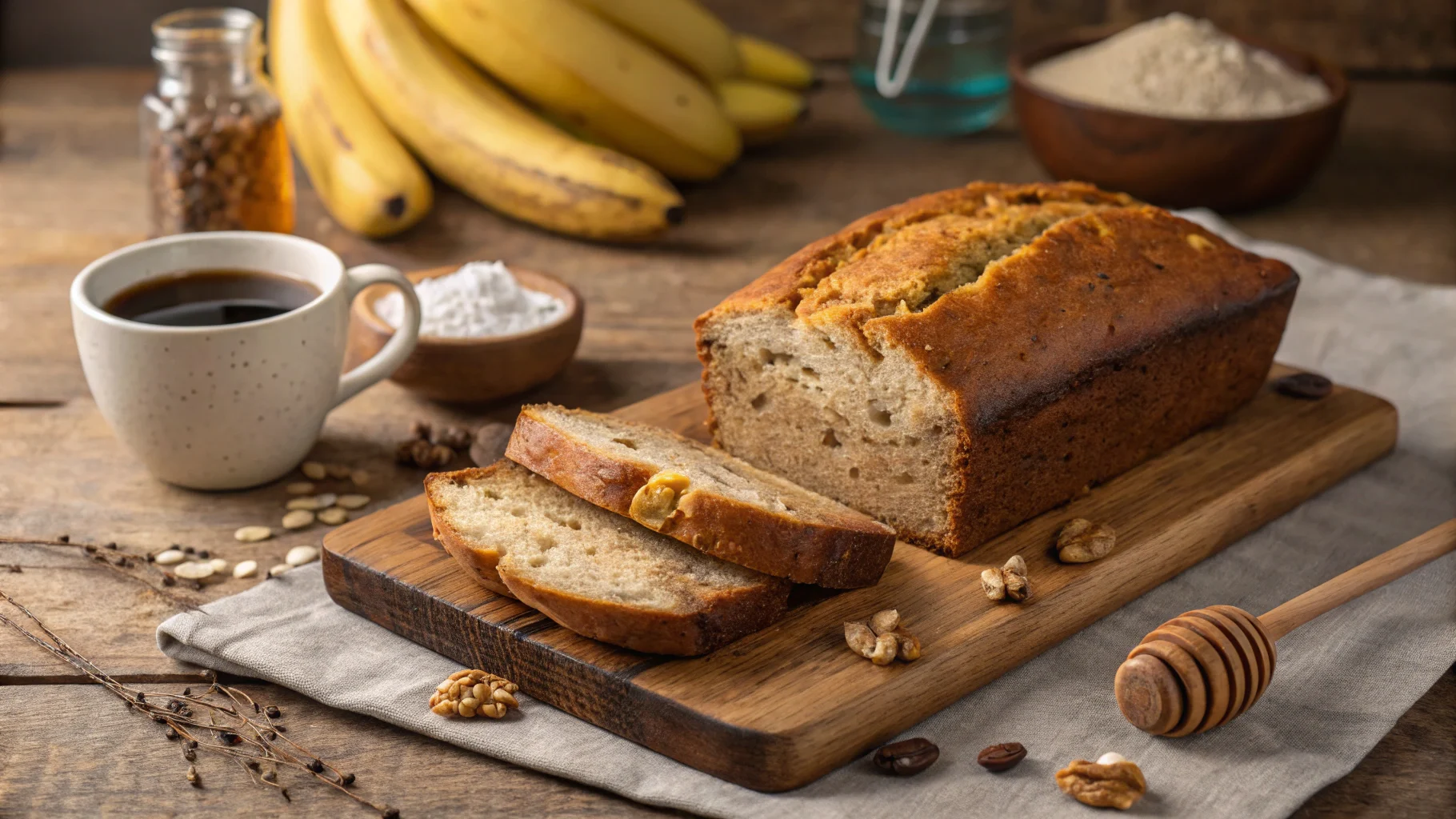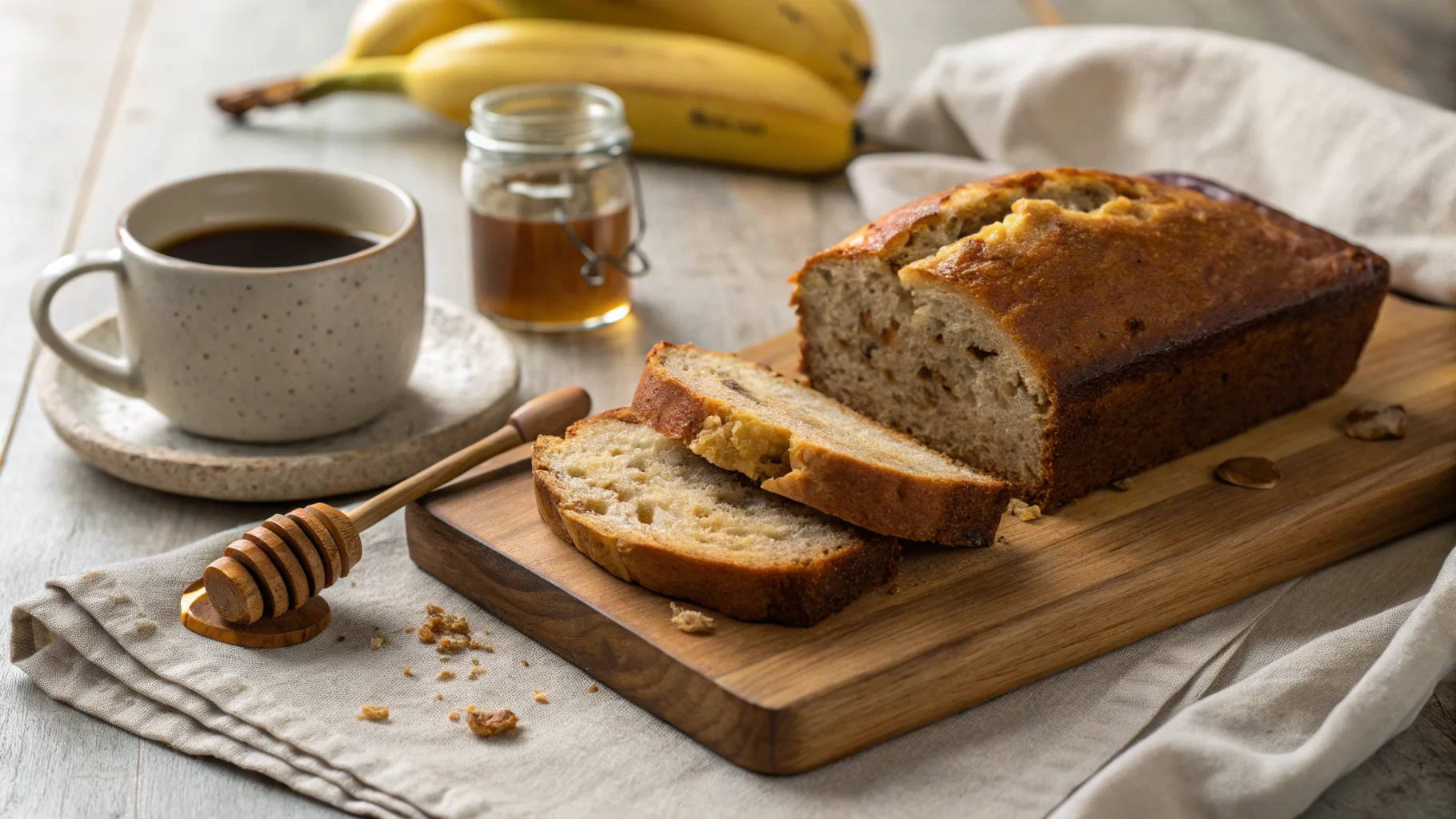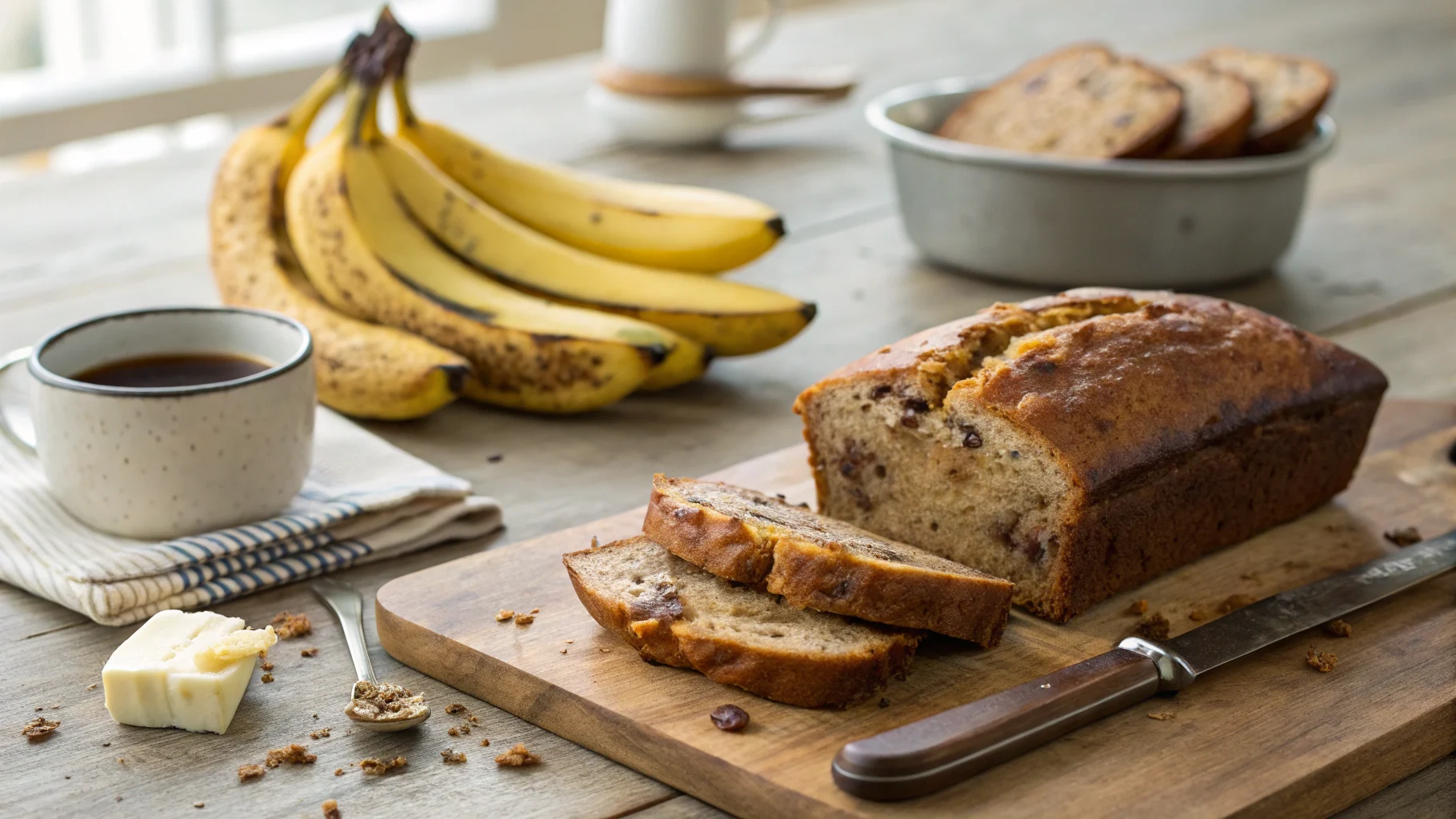Introduction to Carrot Cake
Carrot Cake is a classic dessert that has stood the test of time. Its unique combination of sweetness, spices, and moist texture makes it a favorite for many. Unlike traditional cakes that rely solely on sugar for sweetness, this cake incorporates grated carrots, adding both natural sweetness and moisture. Over the years, it has evolved into a staple in bakeries and home kitchens worldwide.
Beyond its delicious taste, Carrot Cake also carries a rich history. It has been enjoyed in various forms for centuries, adapting to different cultures and preferences. Today, it remains a popular choice for birthdays, holidays, and special occasions. The addition of cream cheese frosting has further elevated its appeal, making it a beloved dessert across generations.
A Brief History of Carrot Cake
Carrots have been used in desserts for centuries. During the Middle Ages, sugar and honey were expensive and hard to find, so people used carrots as a natural sweetener. This practice became common in European countries, where carrots were abundant. Some of the earliest records of carrot-based desserts date back to 10th-century Arabic cookbooks. These recipes featured a sweet carrot pudding, which many believe to be an early version of modern Carrot Cake.
By the 18th century, the idea of using carrots in baked goods spread across Europe, especially in countries like Switzerland and Germany. These early versions of Carrot Cake were denser and more like a pudding than the cake we know today.
In the 1940s, Carrot Cake gained popularity in the United Kingdom during World War II. Due to sugar rationing, carrots became a go-to ingredient for sweet treats. British bakers refined the recipe, adding spices and nuts for extra flavor.
Carrot Cake made its way to the United States in the 1960s. American bakers embraced the dessert, making it lighter and adding cream cheese frosting. Since then, it has become a favorite in American bakeries, often appearing on dessert menus and in home kitchens.
Carrot Cake’s Popularity Today
Carrot Cake remains a favorite dessert worldwide, thanks to its rich flavor, moist texture, and versatile recipe. Many people enjoy it for its nostalgic appeal, while others love it for its unique combination of spices and sweetness. Whether homemade or store-bought, it continues to be a go-to option for celebrations and gatherings.
One reason for its lasting popularity is its ability to adapt. Bakers experiment with different variations, adding ingredients like pineapple, coconut, and walnuts to enhance the flavor. Others create gluten-free or vegan versions to accommodate dietary preferences.
Additionally, Carrot Cake is often associated with healthier dessert options due to the presence of carrots. While it still contains sugar and fat, many perceive it as a slightly better alternative to traditional cakes. This perception, along with its delicious taste, has helped it maintain its place in modern baking.
Essential Ingredients and Their Roles
Carrot Cake is more than just a dessert—it is a carefully balanced combination of ingredients that work together to create a moist, flavorful, and aromatic cake. Each ingredient plays a crucial role in determining the texture, taste, and overall success of the final product. From the natural sweetness of carrots to the warmth of spices and the crunch of nuts, every component contributes to the cake’s signature flavor.
Using high-quality ingredients enhances the taste, ensuring the cake is both rich and satisfying. While the classic recipe remains a favorite, bakers often customize it with raisins, pineapple, and different spices to add complexity. Understanding the purpose of each ingredient allows for greater creativity while maintaining the essential characteristics of Carrot Cake.
Carrots: The Star Ingredient
Carrots are the heart of Carrot Cake, providing both natural sweetness and moisture to the batter. Unlike traditional cakes that rely on refined sugar, Carrot Cake benefits from the mild, earthy sweetness of grated carrots. When baked, these carrots break down, releasing moisture and softening into the cake’s structure.
One of the key advantages of using carrots is their ability to keep the cake tender for longer. Cakes without fruit or vegetable components tend to dry out quickly, but the moisture from carrots helps retain softness, even after a few days.
Additionally, carrots contribute to the cake’s signature texture. They add a slight chewiness that contrasts beautifully with the fluffy cake and creamy frosting. To achieve the best results, freshly grated carrots work best, as pre-shredded ones can be too dry. Using the right amount ensures the cake remains perfectly balanced between moist and light.
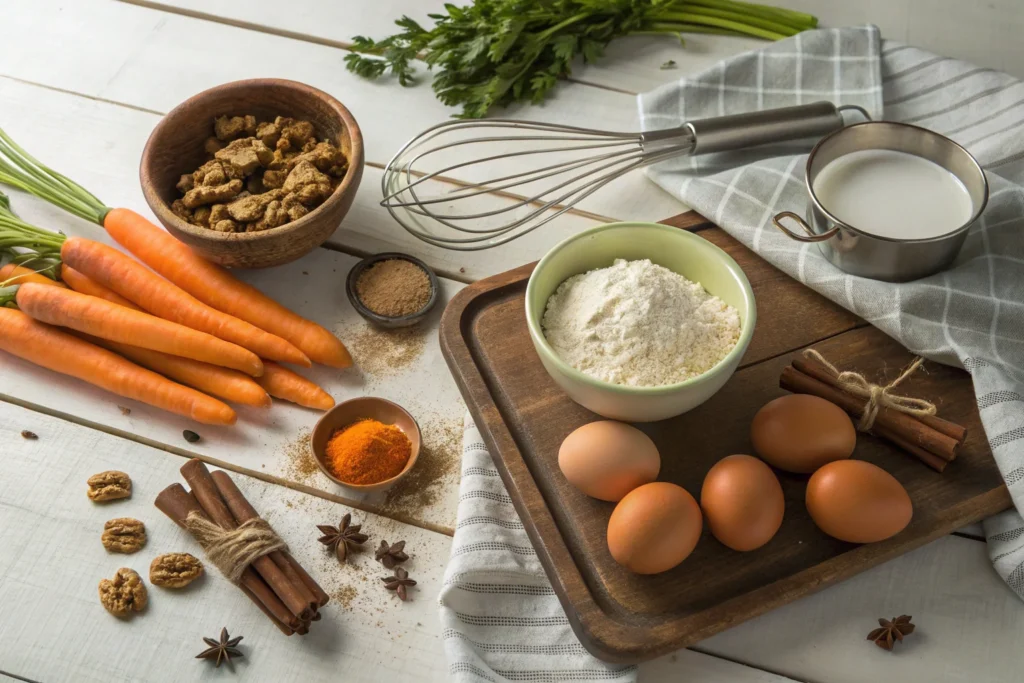
Spices and Flavorings
The warm, aromatic spices in Carrot Cake are just as important as the carrots themselves. These spices enhance the overall flavor, creating a rich, comforting taste that sets Carrot Cake apart from other cakes. The most commonly used spices include:
- Cinnamon – This spice adds a warm, slightly sweet depth to the cake. It pairs well with carrots and brings out their natural flavors.
- Nutmeg – With its earthy and slightly nutty taste, nutmeg complements the sweetness of the cake while adding a mild spiced note.
- Ginger – Adding a bit of ground ginger introduces a subtle heat that balances the cake’s richness. It also enhances the aroma.
- Cloves – Some bakers use a pinch of ground cloves for an extra layer of spice, giving the cake a more pronounced warmth.
- Vanilla Extract – While not a spice, vanilla extract adds a fragrant sweetness that rounds out the flavors in the cake.
Choosing the right combination of spices ensures that Carrot Cake has a distinct yet well-balanced taste. The key is to avoid overpowering the cake—too much spice can mask the natural sweetness of the carrots. Instead, a perfect blend of cinnamon, nutmeg, and ginger creates a comforting, slightly spiced flavor that enhances every bite.
Add-ins: Nuts, Raisins, and Pineapple
Carrot Cake is incredibly versatile, allowing bakers to customize it with various add-ins that enhance both flavor and texture. Some of the most popular additions include:
- Nuts – Adding chopped walnuts or pecans introduces a delightful crunch that contrasts with the cake’s soft texture. Nuts also add a slightly buttery, nutty taste that complements the warmth of the spices.
- Raisins – Many traditional Carrot Cake recipes include raisins, which provide bursts of sweetness and a chewy texture. When baked, raisins absorb moisture from the batter, making them plumper and juicier.
- Pineapple – Crushed or finely chopped pineapple adds an extra layer of natural sweetness and even more moisture to the cake. The slight tartness of pineapple helps balance the cake’s richness.
While these ingredients are optional, they contribute to a more dynamic Carrot Cake. Some bakers prefer a simple, spiced version, while others enjoy the added complexity that nuts, raisins, and pineapple bring. The key to a perfect Carrot Cake is finding the right balance—adding just enough extras to enhance the cake without overwhelming the delicate flavors of carrots and spices.
Step-by-Step Carrot Cake Recipe
Making a homemade Carrot Cake is easier than it seems. With the right ingredients and techniques, you can achieve a moist, flavorful cake that is both rich and perfectly balanced. The key to success lies in preparing the batter correctly, baking it at the right temperature, and finishing it with a smooth cream cheese frosting.
Whether you are an experienced baker or trying Carrot Cake for the first time, following these steps will help you create a dessert that everyone will love. From grating the carrots to mixing the spices and achieving the ideal texture, each step plays a crucial role in the final outcome.
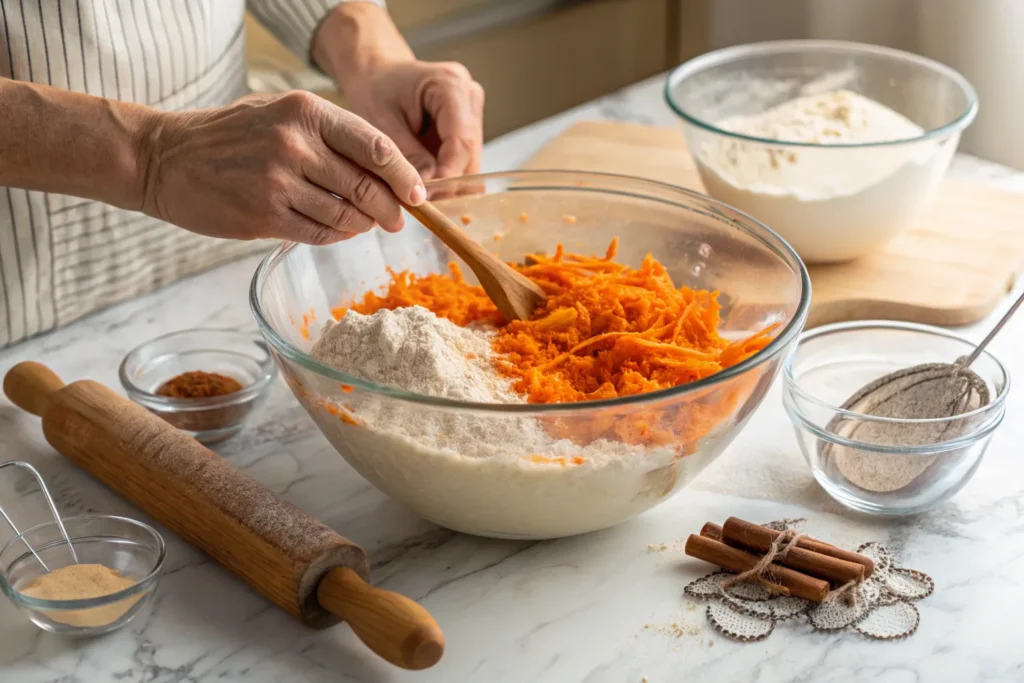
Preparing the Batter
The batter is the foundation of a great Carrot Cake. It should be smooth, well-mixed, and filled with the right balance of ingredients to ensure a moist, tender crumb.
1. Gather Your Ingredients
Before you start, make sure you have all the ingredients ready:
- 2 cups of all-purpose flour
- 2 cups of grated carrots
- 1 ½ cups of granulated sugar
- 1 cup of vegetable oil
- 4 large eggs
- 1 teaspoon of baking powder
- 1 teaspoon of baking soda
- 1 teaspoon of ground cinnamon
- ½ teaspoon of nutmeg
- ½ teaspoon of salt
- 1 teaspoon of vanilla extract
- ½ cup of chopped walnuts (optional)
- ½ cup of raisins (optional)
2. Mix the Dry Ingredients
In a large bowl, whisk together the flour, baking powder, baking soda, cinnamon, nutmeg, and salt. Mixing the dry ingredients first ensures they are evenly distributed, preventing clumps in the batter.
3. Prepare the Wet Ingredients
In a separate bowl, beat the eggs and sugar together until the mixture becomes slightly fluffy. Slowly pour in the vegetable oil while whisking continuously. Add the vanilla extract and mix until smooth.
4. Combine the Ingredients
Gradually add the dry mixture into the wet mixture, stirring gently until just combined. Overmixing can result in a dense cake, so mix until the flour is just incorporated.
5. Fold in the Carrots and Add-ins
Gently fold in the grated carrots, ensuring they are evenly distributed throughout the batter. If using walnuts or raisins, fold them in at this stage.
The batter should be thick but not too dry. If it feels too stiff, you can add a tablespoon of milk to loosen it slightly.
Baking Tips and Techniques
Baking Carrot Cake requires attention to detail. The right temperature, pan selection, and baking time can make all the difference in achieving a perfectly baked cake.
1. Choosing the Right Pan
- A 9-inch round cake pan works well for layered cakes.
- A 9×13-inch rectangular pan is ideal for a single-layer sheet cake.
- A bundt pan creates a unique, decorative shape but may require a longer baking time.
Grease the pan and line it with parchment paper to prevent sticking.
2. Setting the Right Temperature
- Bake at 350°F (175°C) for the best results.
- Avoid higher temperatures, as they can cause the cake to brown too quickly while remaining undercooked inside.
3. Timing and Checking for Doneness
- Bake for 30-35 minutes for round layers or 40-45 minutes for a sheet cake.
- Insert a toothpick into the center—if it comes out clean, the cake is done.
- Let the cake cool in the pan for 10 minutes before transferring it to a wire rack.
4. Avoiding Common Mistakes
- Do not overmix the batter, as this can lead to a dense cake.
- Measure ingredients correctly—too much flour will make the cake dry.
- Use fresh carrots instead of pre-shredded ones for better moisture retention.
Following these steps ensures a perfectly baked Carrot Cake every time.
Crafting the Cream Cheese Frosting
A good Carrot Cake is not complete without a thick layer of smooth, tangy cream cheese frosting. This frosting balances the sweetness of the cake with its rich, slightly tart flavor.
1. Gather Your Ingredients
- 8 oz of cream cheese, softened
- ½ cup of unsalted butter, softened
- 2 cups of powdered sugar
- 1 teaspoon of vanilla extract
- 1 tablespoon of milk (if needed)
2. Beat the Cream Cheese and Butter
In a large mixing bowl, beat the cream cheese and butter together until the mixture becomes light and fluffy. This usually takes about 2-3 minutes.
3. Add the Sugar and Vanilla
Gradually add the powdered sugar, one cup at a time, beating continuously. Add the vanilla extract and mix until smooth. If the frosting is too thick, add a tablespoon of milk to reach the desired consistency.
4. Frost the Cake
Once the cake has completely cooled, spread the frosting evenly over the top and sides. For a layered cake, apply a thin layer first (a crumb coat), chill for 10 minutes, then apply the final layer for a smooth finish.
The result is a creamy, luscious frosting that enhances the flavors of Carrot Cake.
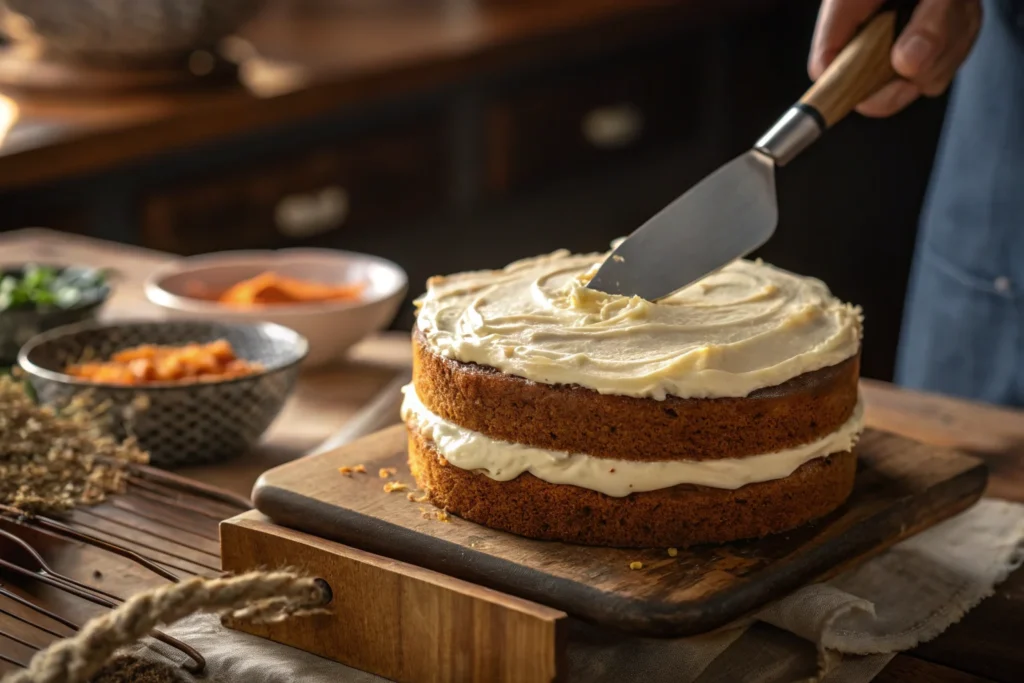
Variations and Dietary Considerations
Carrot Cake is a versatile dessert that can be adapted to suit various dietary needs and preferences. Whether you need a gluten-free version, a vegan alternative, or simply want to experiment with different flavors, there are plenty of ways to customize this classic cake.
By making simple ingredient swaps, you can create a version of Carrot Cake that fits your lifestyle without sacrificing taste or texture. From using almond flour for a gluten-free option to replacing eggs with flaxseed, there are many ways to adjust the recipe while maintaining its signature moist and spiced profile.
Gluten-Free and Vegan Options
For those avoiding gluten or following a plant-based diet, Carrot Cake can be easily modified. The key is to find the right ingredient substitutes that maintain the cake’s moisture and flavor.
Gluten-Free Carrot Cake
To make a gluten-free version, replace traditional flour with a gluten-free flour blend. Some great options include:
- Almond flour – Adds a slightly nutty flavor and helps keep the cake soft.
- Oat flour – Works well but may require additional moisture.
- Coconut flour – Best when combined with another gluten-free flour to prevent dryness.
Since gluten-free flour absorbs moisture differently, adding an extra egg or a tablespoon of applesauce can help maintain the cake’s softness.
Vegan Carrot Cake
For a vegan-friendly version, replace eggs and dairy with plant-based alternatives:
- Egg replacements:
- 1 tablespoon of ground flaxseed mixed with 3 tablespoons of water per egg.
- ¼ cup of unsweetened applesauce per egg.
- Dairy substitutions:
- Use coconut oil or vegan butter instead of butter.
- Swap almond milk or oat milk for regular milk in frosting.
With the right substitutions, Carrot Cake can still be fluffy, moist, and full of flavor while being gluten-free or vegan.
Creative Twists on the Classic Recipe
Carrot Cake is a great base for experimenting with flavors and textures. Whether you want a fun, bite-sized version or a spicier twist, there are many ways to customize this cake.
Carrot Cake Cupcakes
Turning Carrot Cake into cupcakes makes it easier to serve and portion. Simply use a muffin tin and bake at 350°F (175°C) for 18-22 minutes. The smaller size creates a slightly crisp edge while keeping the center soft.
Adding Unique Spices
To give Carrot Cake a bolder flavor, try using different spices like:
- Cardamom – Adds a floral, citrusy note.
- Star anise – Introduces a mild licorice-like sweetness.
- Pumpkin spice blend – Enhances the warm, autumnal feel of the cake.
Tropical Carrot Cake
For a tropical twist, add shredded coconut and crushed pineapple to the batter.
By making small adjustments, you can create a unique Carrot Cake that suits any occasion.
Frequently Asked Questions
Carrot Cake is a beloved dessert with a rich history and a unique combination of sweetness, spices, and moist texture. Many people have questions about its ingredients, origin, and nutritional value. Below are some of the most commonly asked questions about Carrot Cake, along with clear and informative answers.
What Are the Ingredients of a Carrot Cake?
A traditional Carrot Cake includes a mix of simple yet essential ingredients that contribute to its moist texture and rich flavor. The base ingredients typically include:
- Grated carrots – Provide natural sweetness and moisture.
- Flour – Forms the structure of the cake.
- Sugar – Enhances sweetness and contributes to a soft texture.
- Eggs – Help bind the ingredients and add richness.
- Vegetable oil – Keeps the cake moist and prevents dryness.
- Baking soda and baking powder – Ensure the cake rises properly.
- Spices – Common choices include cinnamon, nutmeg, and ginger for warmth.
- Optional add-ins – Walnuts, pecans, raisins, or pineapple can be included for extra flavor and texture.
Each ingredient plays a key role in creating the perfect balance of sweetness, spice, and moisture in Carrot Cake.
Why Is It Called Divorce Carrot Cake?
The term “divorce carrot cake” is not widely recognized in traditional baking references, but it may have originated from a humorous or personal anecdote. Some theories suggest:
- It could refer to a particularly indulgent Carrot Cake recipe, jokingly described as being so good it could cause arguments over the last slice.
- The phrase might be linked to a specific baker or cookbook author who shared a story about a “divorce-worthy” cake.
- It may be a regional or niche variation of Carrot Cake, featuring unique ingredients or a distinct preparation method.
Without a clear historical reference, the meaning behind divorce carrot cake remains open to interpretation. If you have come across this term in a specific recipe or context, it may be worth researching its origins further.
Is Carrot Cake Healthier Than Other Cakes?
Carrot Cake is often perceived as a healthier dessert due to the presence of carrots, but it is still a high-calorie treat. While it contains some nutritional benefits, certain factors make it similar to other cakes in terms of sugar and fat content.
Potential Health Benefits
- Carrots add vitamins and fiber, contributing to a slightly higher nutritional value than some cakes.
- Nuts and raisins (if included) provide healthy fats and antioxidants.
Why It’s Still a Dessert
- Most Carrot Cake recipes contain sugar, oil, and flour, which make it calorie-dense.
- Cream cheese frosting, a signature topping, adds extra fat and sugar.
Carrot Cake can be made healthier by reducing sugar, using whole wheat flour, or substituting Greek yogurt for some of the oil. However, it should still be enjoyed in moderation like any other dessert.
Why Is Carrot Cake Called Carrot Cake?
Carrot Cake gets its name because grated carrots are one of the primary ingredients in the batter. The use of carrots in baking dates back centuries, originally serving as a natural sweetener when sugar was scarce.
- During the Middle Ages, carrots were used in European desserts due to their high natural sugar content.
- The modern version of Carrot Cake evolved over time, incorporating spices, nuts, and cream cheese frosting to enhance the flavor.
- Unlike traditional cakes that rely solely on sugar, Carrot Cake has a slight earthy sweetness from the carrots.
Despite its name, Carrot Cake does not have a strong carrot flavor. Instead, the grated carrots melt into the batter during baking, contributing to the cake’s signature moist texture and subtle sweetness.
Conclusion
Embracing the Timeless Appeal of Carrot Cake
Carrot Cake is more than just a dessert—it is a time-honored classic that brings together moist texture, warm spices, and a rich cream cheese frosting for a truly indulgent treat. Its origins date back centuries, yet it remains just as popular today, with countless variations to suit different tastes and dietary preferences.
Whether you enjoy a traditional Carrot Cake or prefer a gluten-free or vegan version, there are endless ways to make this cake your own. Adding nuts, pineapple, or extra spices can elevate the flavor, while healthier modifications can make it a more balanced treat.
Now that you know the secrets to a perfect Carrot Cake, it is time to try baking one yourself. With the right ingredients and a little patience, you can create a homemade Carrot Cake that is just as delicious as any bakery version.
